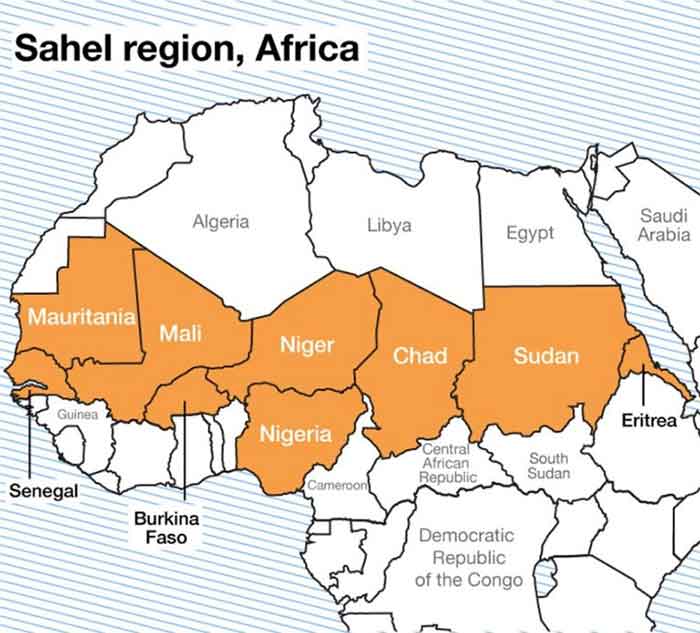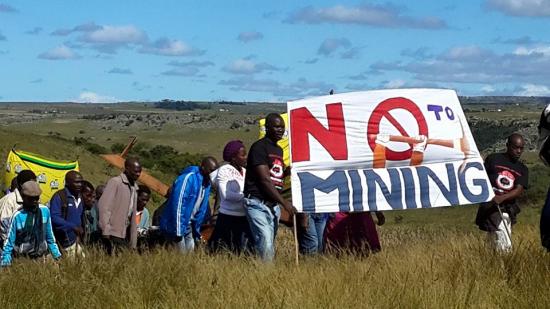
“Suppose there are ten people in this room. Seven are starving, and one is winning medals, and two are doing OK. And I say, ‘Look at these seven people who are starving,’ and you say, ‘Oh, don’t be so negative, no, things are not so bad – look at the other three.’ Really?” Arundhati Roy.
Globalization of the economic system has affected the nearly four hundred million indigenous people of the world in the worst way.
Corporations cannot survive without an ever-increasing supply of oil, gas, minerals, fish, freshwater, arable lands, and require infra-structure-new roads, pipelines, dams, electricity grids, air and seaports. 1
The lands of the native people are the last resources, and have become prime targets of global corporations.
Out of an estimated five thousand ‘native’ societies on earth, a substantial number are in Central and South America, Southeast Asia, Africa and the northernmost regions of the world. They face grave threats everywhere from the machinations of WTO, GATT, TRIPS, WB and IMF.
Financial/Investment Liberalization demands unimpeded foreign capital investment, removal of controls on currency and speculation and foreign equity to increase to 100%. It also requires cuts in Social spending, trade/import liberalization, dismantling of tariffs/regulation to protect local products. A prime requirement is the guarantee of Property Rights of Corporations, which have to be treated as humans. Privatization of State Agencies and Assets, and sale of all assets to the private sector, currency devaluation, reduction of payroll, services, public investment and infra-structure are also mandatory. Removal of subsidies/price controls on basic food and agriculture for local needs and increased interest rates for credit are also demanded. (2)
Free trade is the core belief of all these neo-con institutions which require elimination of all taxes, domestic barriers, including environmental, health and labor laws.
Only second in importance in neo-con theology is privatization-transfer to corporate ownership of freshwater, forests, energy sources, genetic structures of plants and humans, water delivery, education, transport, health and sanitation, public broadcasting and welfare.
Deregulation is the third mantra-lift all controls on corporate behavior, responsibility, liability and accountability.
Structural adjustment, that the nations remodel their economies in return for loans, including social welfare and environmental policies to suit corporate growth is the whip that WB and IMF employ for compliance.
Financial liberalization leads to decapitalization of nations with volatile capital flow, loss of control over entire sectors of the economy to MNCs (Multinational Corporations)., and diminished enforcement of laws to promote people’s rights.
It is all to favor the elite to be able to own more land, exclude local investment, take away all profits and allow 100% foreign ownership of all resources and give them tax breaks.
The poor are rendered more wretched. Cuts in social spending reduce access to health, education and social services and raise illiteracy rates. Guaranteed property rights heightens conflicts between people’s traditional land rights and corporate claims. Privatization of state assets causes massive job losses as private owners shed jobs.
It also excludes the poor from education, health and social services. Currency devaluation intensifies pressure to export and reduce wages. Smaller government leads to massive layoffs as the government is the largest employer in LDCs. Small farmers are forced to sell land, become tenant farmers or move to city slums.
Corruption is vastly increased as Multinational Corporations (MNCs) bribe local officials to do their bidding.
Free movement of capital is removal of all restrictions on global investors to move capital, in and out of countries, despite destabilizing effects seen in Latin America, Russia and East Asia.
Export-oriented growth favors large-scale export industries to small-scale local farms, markets, artisans and businesses, replacing local economies with trade-oriented systems.
Advocates of globalization claim benefits would ‘trickle down’, “A rising tide will lift all the boats” (3).
Instead they have greatly increased the divide between the poor and the rich, diminished political and economic democracy, devastated the environment and accelerated climate change. The model only lifts yachts.
The model was designed for short term gains of a small number of corporations at the top.
Current battles are on the remaining fresh water, and the pollution of Mayan corn by genetically engineered varieties imported from the U.S.(4)
Eco-tourism has converted indigenous communities into cultural zoos. (5).
Occupation of Abstract Space:
Economic globalization is an outgrowth of the colonization that the people in the South have suffered from for five hundred years. They occupied physical space before. They still do (Iraq, Afghanistan, Gaza, Bosnia, Chechnya, Africa and other places), but the trend is to occupy abstract space through churches, schools and media which teach the Less Developed Countries (LDCs) to despise themselves. The new shape of slave labor is outsourcing, which hurts the South and North both. (6).
Globalization, the current incarnation of capitalism continues to regard all living beings, nature, and all life, as a commodity. Genetically engineered sheep like Tracy, enables them to secrete marketable drugs in their milk. Trade has to be liberated, so that highly subsidized wheat and canola oil can devastate local farmers in Asia.
Corporations grab not only the resources, but also knowledge about local plants-to privatize, and monopolize. They use paramilitary groups to deal with resistors. (7).
Sustainable development has come to mean sustainability of the global market economy. The countries that subsidize their products flood foreign markets.
When indigenous farmers do try to convert traditional farming to cash-crop, they are overwhelmed by products from Canada and the USA, so they are driven out of their hearth and home.
Corporations are allowed investment with 100% equity with no local partners and are free to remove people from their lands, leading to millions of displaced farmers in India alone, with hundreds of thousands of suicides since 1998 (8).
The most damaging aspect of international trade policies is that the market price of natural resources is determined by the corporate system, which does not take into account the environmental and social costs. Scientists have turned into accomplices by publishing data which bio-prospectors use.
Whole regions are declared ‘wild’ for exploitation. Natural Habitats are destroyed. WHO has estimated that 80% of the non industrial world depends upon traditional medicine. The sources are destroyed. (9).
World Trade Organization:
The essential agenda is to reduce the role of individual governments in all economic matters. It effectively functions as world government, passes laws, settles disputes in its own courts, and has major financial enforcement powers. It restricts people from influencing their own government. Many cultural, health and environmental standards are direct victims of WTO. Sub-federal governments are restricted from exercising their autonomy in food policy, taxation and resource management. (10).
The General Agreement on Tariffs and Trade (GATT) established in 1947 in Bretton woods, along with WB and IMF, set voluntary principles for free trade. They became compulsory with the creation of WTO. (11).
The articles, “Most Favored Nation” and “National Treatment” effectively restrict governments from stopping imports from countries on moral or ethical grounds; HR violations, Labor standards, environmental concerns, illicit trade or war. If they had been mandatory at the time, it would have been impossible to boycott South African apartheid.
They keep governments from favoring local industries and agriculture. Foreign businesses and banks may take over the economy of weak nations and may not protect over exploitation.
The article on Free Transit of Goods restricts government’s right to regulate trade at borders.
The article Qualitative Restrictions keep governments from imposing quotas and protecting local resources.
The article on General Exceptions makes governments offer proof if they want to protect certain trees, animals or human health; that such laws should not be overturned by WTO.
The net result is loss of sovereignty.
Agreement on Agriculture (AoA) eliminates tariffs, quotas, standards on quality of imports and increases competition from subsidized imports. (12).
Governments may not support domestic products.
Export subsidies not permitted though the US and Europe continue to do so in the guise of research grants and funds for advertising. (13).
WTO rules discriminate in favor of massive monocultural production (export oriented industrial agriculture), beef, exotic flowers, Soya, luxury vegetables, and bring enormous environmental problems. Large new infra-structure systems are required, new roads, canals pipelines and ports, which destroy habitat. (14).
Agreement on Sanitary and Phyto-Sanitary measures restricts governments from preventing entry of harmful or invasive species or diseases for food safety. They restrict the government’s ability to regulate import of transgenic products.
WTO vigorously enforces corporate rights; it does little to recognize people’s rights. Fishing communities in Coastal areas of India were replaced by massive foreign investor driven shrimp farms, which were permitted to dump shrimp everywhere.
Agreement on Trade-Related Aspects of Intellectual Property Rights (TRIPS), explicitly allows patenting plants, animals, microorganisms, but does not require patent applicants to declare the source of genetic material. (15).
Under its rules, biotech companies can privatize genetic resources and legally exercise exclusive rights over the material. This has had a major effect in India.
It does not even require patent holders to compensate or share benefits with the people.
Field scientists often use indigenous knowledge and file a patent claim as their ‘discovery’.
Examples include W.R Grace’s patenting of a pesticide derived from ‘neem’ a tree, villagers in India have used through history as a pesticide and medicine (16). A California scientist filed for a patent on the psychoactive plant hayahuasca, used on the Amazon for spiritual rituals. Other examples are quinoa and sangre de drago in the Americas, turmeric and bitter melon in India and kava in Pacific. (17).
General Agreement on Trade in Services (GATS) is an attempt at privatization of such services as water treatment and delivery, health care, broadcasting, welfare, insurance and banking. (18).
In 1999, Bolivia accepted a WB loan, which required that water in Cochabamba, the third largest city be privatized. Bechtel Corporation was granted ownership of pipes, pumps, purification and delivery equipment, and gathering and storage facilities. Users who made less than a $ 100.00 a month got water bills of $ 20.00 a month. Water was shut off for non-payment. Riots ensued, martial law was imposed, protesters shot dead, before the contract was cancelled (19).
Agreement on Investment would impose a requirement like the ones in NAFTA, that any loss in profits because of local or national rules be compensated by the government. (20). Rich nations are eager to establish the NAFTA right of foreign investors to sue national governments directly, if they enact any measures that reduce planned profit.
Bio-colonialism:
Through TRIPS corporations can lay monopoly claims to human genes and biodiversity. When genes become private property, they become alienable.
In 1984, Moore, a Seattle businessman sued the UCLA that while undergoing treatment for leukemia at the UCLA Medical Center, his doctor, without his consent, developed a cell line from his blood, which proved valuable in fighting cancer. In a landmark decision in 1990, California Supreme Court decided that patients do not have a “property right to the tissues removed from their body” (21). Under the decision for patenting DNA from individuals can be patented, with or without consent.
In 1993, the then secretary of labor Ron Brown filed a patent claim on the cell line of a Guanami woman from Panama, because some Guanami people carry the virus/antibody, which might be useful in AIDS and leukemia research (22).
In 2002, the Nuu-chah tribe in British Columbia found that samples for arthritis research taken in the 1980’s at the University of British Columbia were being used by Oxford University in England. Dr Ryk Ward, who had left BC in 1986 had taken about 900 samples without their consent (23).
In November 2000, an Australian biotech company, Autogen Ltd signed an agreement with the Kingdom of Tioga’s minister of health to secure exclusive rights to the entire gene pool of the people of Tonga. Because of HR group protests, the proposal was ultimately dropped (24).
In the Earth summit of 1992, in Rio de Janeiro, signatory parties agreed to the “Conservation of biological diversity…sustainable use…fair and equitable sharing of benefits…” (25).
An open ended working group on Access and Benefit sharing is to be negotiated. The focus is on promoting, rather than preventing, the commercialization of genetic resources.
In South Africa, the San people do not eat while hunting, and stave off hunger by chewing the stem of a cactus called Hoodia. In 1997, The South African council for Scientific and Industrial Research, secured a patent on the appetite-suppressing component called P 57, and licensed the development rights to Phytopharm, which sub-licensed the rights to Pfizer. Nobody bothered even to inform the San people. In fact Phytopharm claimed that the 100,000 San people were extinct (26).
In 2003, after a lot of condemnation, the CSIR offered a benefit-sharing arrangement to the San people (27).
GATT, TRIPS, WTO and Corporations:
During the GATT negotiations, the US forced its own patent system onto the world through WTO. US corporations drafted and lobbied for the creation of Trade Related Aspects of Intellectual Property Rights Agreement (TRIPS). Monsanto spokesman admitted “The industries and traders…played simultaneously the role of the patients, diagnosticians, and the prescribing physicians” (28).
Life Science Corporation established article 27.3 (b) to claim patents on genes, seeds, animals and plants. Ciba Geigy and Sandoz have joined to form Novartis, Hoecht with Rhone Poulenc to Aventis, (acquired by Sanofi-Synthelabo), Zeneca merged with Astra, Monsanto owns Cargill Seeds, DeKalb, Calgene, Agracetus, Delta and Pine land, and Asgrow. 80% of all GM seeds planted are ‘Monsanto’s’ intellectual property. Monsanto also owns broad species patents on cotton, mustard and Soya bean (29).
TRIPS laws permit the claim that seeds, plants, animals and human cell lines are “products of the mind” created by Monsanto and their kin.
Farmers are converted into “thieves”. Monsanto hired detectives to chase farmers, and sued Canadian farmer Percy Schmeiser, on whose field ‘Monsanto seeds’ had been flown over by the wind.
The US sued India in a dispute, and the WTO forced India to change its patent laws and grant exclusive rights to foreign corporations on the basis of foreign patents.
The US government granted patents for the anti-diabetic properties of karela, brinjal and jaman (bitter melon, eggplant, Indian plum) to two NRIs, Onkar S. Tomer and Kripanath Borah and a partner Peter Glonski, despite the fact that the medical use of Neem, haldi, pepper, harar, bahera, amla, mustard, basmati, ginger, castor, jaramla, and amaltas is well documented in authoritative treatises like “Wealth of India and “Compendium of Indian Medicinal Plants” and “Treatise on Indian Medicinal Plants” (30).
In the 2002 Convention on Biological Diversity, global agricultural and pharmaceutical corporations strongly fought for the seemingly altruistic concept that biodiversity is “common human heritage”, ought to be freely accessible, and not locked up by indigenous communities. But once they lay their hands on such resources, they move immediately to privatize, patent and monopolize and keep all financial rewards to themselves.(31).
The Amazon RainForest:
Bribes to local officials and politicians have enabled the WTO, WB and global corporate interests to build new roads, pipelines, dams and power lines deep into forests to exploit oil and mineral reserves and timber, and link them with global markets.
In March 2001, the Italian oil company AGIP Oil signed a contract with six Huaorani communities in Ecuador, offering to compensate them with 50 kilogram of rice and sugar, a bag of salt, 2 footballs, 15 plates and cups, 34 cans of tuna and sardines, some medicines, a radio, a battery and solar panel and $3,500.00 to build a school room, in return for building six oil wells on Huaorani lands (32).
In the case of the Coari-Urucu gas pipeline in Brazil, 7,000 workers and vendors settled around towns, threatening the livelihood of indigenous people (33).
HR abuses inflicted on local people over the paving of Manuas-Caracas road consisted of beating, torture and killing by Brazilian army (34). In the 1970’s and 1980’s, two thousand of the Waimiri-Atroari people disappeared, and they lost 80% of their land (35).
In the 1980’s, the Parakana people of Eastern Brazilian Amazon were forcibly resettled to make way for the Tucurui Hydroelectric scheme (36).
In the North Eastern Ecuador oil producing region, thirty years of Texaco Oil operations has left a toxic legacy, and high rates of cancer, skin rashes, sores, stomach and respiratory problems. Cancer rates are three times higher than the national average (37). In the Camisea region of Peru in the mid 1980’s, Shell Oil conducted exploration for oil and gas. That led to an influx of loggers and exposed the indigenous people to whooping cough, small pox and influenza. An estimated 50% of the population died (38).
The Belo Monte dam, which will be the third-largest such project in the world, has been strongly opposed by environmental campaigners and indigenous people who face being displaced. Environmental groups have warned that the dam could lead to the displacement of tens of thousands of people and threaten the survival of indigenous groups in the area.
Last year James Cameron, the film director, compared the plans to the plot of his box office hit Avatar, in which the Na’vi race fight to protect their planet from outside forces seeking to extract resources.
The Ecology Disaster:
Arctic Ice was once 5 ft thick, but in many places it has been reduced to 5-6 inches. (39).
Marshall Islands Glow: The Guinea Pigs of Marshall Islands:
Zohl de Ishtar, a University of Queensland, Australia professor, has written about the half century of US atomic testing in Bikini on the Marshall Islands in the Pacific to Star Wars missile testing on Kwajalein which forced removal of thousands of islanders to a nearly inhabitable island (40).The Island’s geographic isolation has given the US a mantle of secrecy to develop nuclear bombs, missile and space warfare technology. That has violated the health of the people.
From 1946 to 1958, the US detonated 66 nuclear bombs in Bikini and Enewetak atolls. In March 1946, all 167 residents of Bikini were relocated to the barren sandbar island of Rongerik. On June 30, 1946, the first post WW II nuclear bomb was detonated on Bikini atoll (41).
In July 1947, the Marshall Islands, along with other Micronesian nations, became the UN’s only Strategic Trust Territory under the US administration. The Trust obligated the US to “promote the development of the inhabitants of the trust territory towards self-government or independence…promote the economic advancement…development of fisheries, agriculture, industries, protect…land and resources’ ‘ (42).
In December 1947, the US government removed the people (43).
In March 1948, Bikinians were relocated to Kwajalein, and then to Killi with no protected lagoon/harbor which made fishing impossible (44).
On March 1, 1954, despite reports that the wind was blowing towards inhibited areas, the US detonated its first deliverable H bomb, 1000 times more powerful than the Hiroshima bomb, over Bikini. (45).
The US had removed its naval ships out of the area before the test, but took over 48 hours to evacuate the people, who by that time had started suffering from nausea, vomiting and rashes due to exposure to radioactivity. The US Atomic Energy Commission tried to cover up by declaring that “Unexpectedly exposed…there were no burns”. This declaration was belied by the publication on March 7, 1954 of a ‘secret’ medical study (46).
In December 1956, after 17 more nuclear/hydrogen bombs, the US offered the Enewetak people US $ 25,000 in cash and a $ 150,000 collective trust fund. The Bikinians were given $ 25,000 in cash and $300,000 in a trust fund, yielding 15.00 per person per year (47).
In July 1957, the US declared Rongelap island safe for habitation “The habitation of these people on the islands will afford most valuable ecological radiation data on human beings”-Department of Energy’s Brookhaven National Laboratory, internal report (48).
In May 1958, another 32 tests began. According to Rev B. David Williams and The Foundation of the Peoples of South Pacific…”In 1958, the rate of still birth… and miscarriages…rose to more than twice…” (49).
In 1973, Brookhaven National Laboratory reported that 69% of children under ten years of age at the time of the tests had developed thyroid problems.
In July 1976, the US Congress allowed $ 20 million for nuclear clean up. By May 1977, 100,000 cubic yards of topsoil had been scraped off, and dumped in the bomb crater on Runit Island, and sealed with cement (50).
In December 1984, the US National Radiological Survey reported that almost half the Marshall Islands had been contaminated by the US nuclear testing program (51).
In January 1994, US Congressman George Miller wrote to Bill Clinton…they had been used as “guinea pigs” by the US military (52).
Wars for Global Water:
Global consumption of water is doubling every twenty years, twice as fast as the human population. Per the UN, by the year 2025, two thirds of the humans will live under conditions of serious water shortage, and one third under absolute water scarcity and, “The next World war will be about water” (53).
The two biggest consumers of freshwater are industrial agriculture and ‘Chip’ manufacturers. Drinking water is a distant third.
Water privatization is already a $ 400 billion business; dominated by the likes of Shell oil and Bechtel, it is worth 100 billion in the USA, (54).
Imperialists routinely took the most fertile and water-rich areas. Israel has taken over the water sources in the West Bank. (55). Its citizens have automatic sprinklers for their lawns, while Palestinians have scarce drinking water.
Sustainable agriculture using a fraction of what industrial agriculture does, is being dismantled.
Even today the trend continues. Masai of East Africa, and Guarani and Kaiowa of Brazil were forced to leave their land in January 2002 (56). In February 2002, Gana and GWI bush families in the Central Kalahari game reserve of Botswana had their water supplies cut off by the government (57).
An estimated 5 million persons, most of them children, die every year due to use of polluted water (58).
In India, people have successfully closed down several Coca-Cola bottling plants. During 2004, New Delhi had the first People’s Water Forum. Venezuela codified several years ago that water cannot be privatized, and Uruguay followed suit in 2004.
Similar, though less successful struggles are going on in other parts of the world like South Africa, Canada, Argentina, Philippines, Trinidad, Ghana, Tanzania and the USA, in Atlanta, New Orleans and Stockton CA.
Mayan corn genetically polluted:
Mexico’s corn gene pool is 5,000 years old and includes thousands of varieties and plant relatives specific to each region.
Detection of genetically engineered corn in Southern Mexico was a great shock. (59). Most researchers suspect dumping in Mexico of 5 million tons of US maize contained the material
Nigeria Despoiled by Oil Spills:
The massive 1970 oil spill in the Ogoni village Ebubu killed many. Shell oil erected a wall around the site, and government troops sealed off access (60).
With the connivance of Nigerian regimes, military and civilian, which have murderously suppressed their own people, the Royal Dutch Oil Co has waged an ecological and economic war against the people of Niger Delta for six decades. (61).
Oil production, gas flaring (gas released in air; in Texas, it is compressed into liquid), spillage, construction of canals and waste dumping have already brought Niger Delta to near ecological collapse. (62). They employ their own police, import their own arms and ammunition, and has admitted bribing the Nigerian military.
The Philippines ‘Mining Disaster’ Act of 1955.
Under pressure of the Asian Development Bank, the government adopted the Act, allowing massive influx of foreign mining corporations, which can lease the land for 75 years, keep 100 % control and may repatriate 100 % of their profits. (63).
Published on Friday, January 28, 2011 by The Telegraph/UK****
Ibama, the Brazilian environment agency, said on its website that it has approved the clearing of 588 acres (238 hectares) of forest at the site where the dam will be built in the state of Para.
It also said that Norte Energia, the consortium that won the bidding to construct the dam, can begin building roads to reach the remote site on the Xingu River, a tributary to the Amazon.
Contracts for the dam – which the government expects to cost nearly £ 10 billion – were finally signed last August after decades of disputes about plans for a dam in the area and a series of court injunctions.
But several potential legal hurdles remain, with licences still to be granted for the actual building of the plant, which the government wants to see completed by 2015.
The 3.7 mile wide dam will lead to around 190 square miles of land being flooded.
Environmental groups have warned that this could displace tens of thousands of people and threaten the survival of indigenous groups in the area.
But Brazil’s government has been determined to press ahead with Belo Monte, which is crucial to efforts to keep up with rising demand for energy as the country’s rapid economic growth continues. Ministers have also defended the scheme as a source of clean and renewable energy and Edison Lobao, the Energy Minister, has referred to it as “the jewel in the crown.”
Bibliography/References:
- 1. Jeffery Manders and Victoria Tauli-Corpuz, (Eds.), “Paradigm Wars: Indigenous People’s Resistance to Globalization,” (San Francisco: Sierra Club books, 2006).
2.www.imf.org/external/np/exr/facts/conditio.htm .
- www.answers.com/topic/supply-side-economics
- 4. ibid 1.
- 5. Ibid.
- 6. Ehtisham, S. Akhtar, “A Medical DoctorExamines Life on Three Continents,” (New York: Algora Publishings, 2008),”
- 7. Sebastian, Thomas, “Globalization and Uneven Development: Neocolonialism, Multinational Corporations. Space and Society,” (Jaipur, India: Rawat Publications, 2007).
- ibid 2.
- 9. ibid 7; who.int/topics/traditional_medicines
- 11. Hobsbawm, E.J,. “Industry and Empire: From 1750 to the Present Day,” (Harmonsworth, Middlesex, England: Penguin Books, 1969).
- 12. McMahon, Joseph, “Agreement on Agriculture: A Commentary (Oxford Commentaries on International Law,” (N.Y: Oxford University Press, 2007). .
13.en.wikipedia.org.wiki/funding-of science; www.globalreseaqrch.ca/criminal-health-care-industry-us-government...
- 14. com/2013/09/25sustainable-agriculture-vs-free-trade.
- 15. tripsagreement.net/Refto Trade Related Aspects of Intellectual Property .
- ibid 7.
- Ibid.
- 18. www.gatt.org.gatt.html
- 19. Kinzer, Stephen, “Overthrown: America’s Century of Regime Change from Hawaii To Iraq,” (New York: Henry Holt and Company, 2006).
- www.ustr.gov/trade-agreements/free-trade-agreements/north-american-free-trade-agreement-nafta
21. “Moore V Regents of the University of California,” SC California, 1990, Rebbeca Skloot, “Taking the Least of You: The Tissue-Industrial Complex,” The New York Times Magazine April 16, 2006. - 22. en.wikipedia.org.wiki/Guam
- 23. teps2core.Ca/files/module4/Bad_Blood_Nuu-chah-nulth_radio…
- 24. blogspot.com/2009/7paradigm-wars.html. .
- 25. www.un.org.geninfo/lep/enviro.html .
- 26. hoodia-diets.info/hoodia-gordonii-san-people-article-html
- Ibid.
- www.grims.org/ss-r/30/30.
- 29. TRIPS article 27.3(b). 1.sis.org.uk/trips99.php
- 30. Shiva, Vandana, “Earth Democracy: Justice, Sustainability and Peace,” (Cambridge, M.A.: South End Press, 2005).
- 31. un.org/news/Press/doc/2002/unep106.doc.html.
- 32. corpwatch.org/article.php?id=13115
- 33. ibid 1.
- 34. wikipedia.org/wiki/Brazilia_militarycoup.
- http://abyayala.nativeweb.org/brazil/cimi/232.html
- 36. http://amazonwatch.org/work/xingu-river-and-its-people
- 37. http://www.linktv.org/latinpulse
- http://www.iwgia.org/iwgia_files_publications_files/0118_IsolationDoc100FullText.pdf; www.telegraph.co.uk>News<WorldNews<SouthAmerica<Brazil
- 39. http://phys.org/news/2012-10-behaviors-arctic-sea-ice-antarctic.html
- 40. Daughters of the Pacific [Paperback], (North Melbourne, Australia: Spinifex Press, 1994)
- 41.http://www.princeton.edu/~ota/disk1/1989/8909/890904.PDF
- 42. UNO Charter “International Trusteeship System”, Chapter XII, Article , 77.
- 43. Richard N. Salvador” The Nuclear History of Micronesia and the Pacific “Republic of Bellau, Aug. 1999. Published on Web by Nuclear Age Peace Foundation
- 44. Ibid
- 45. Ibid
- 46. Ibid
- 47. Ibid
- Final report of the Advisory Committee on Human Radiation Experiments. (New York: Oxford Univ. Press, 1996).
- 49. Siwitibau, Suliana and David Williams 1982 “A Call to a New Exodus: an Antinuclear Primer for Pacific Peoples” (Suva: Lotu Pasifika Productions, Pacific Council of Churches, Fiji); eve.inviroweb.org/perspectives/issues/nuclear.html
- 50. rmiembassyus.org/Nuclear%20Issues.htm
- 51. ibid D
- 52. hawcc.hawaii.edu/history/Nuclear%20Era2.ppt
- 53. wordpress.com/tag/water–shortage
- 54. http://www.ratical.org/ratville/CAH/BechtelBlood.html
- muftah.org/the-israeli-palestinian-water-conflict-by-ramzi-el-houry-3
- .allAfrica.com: Africa: Pambazuka News 172:allafrica.com/stories/200409030437.html
- 57. “Bushmen- Survival International “
www.survivalinternational.org/tribes/bushmen
58. “WORLD WATER QUALITY FACTS AND STATISTICS ” Pacific Institute, 510-251-1600 x106, [email protected]
- 59. Earth” …sott.net/article/195195-Mexican–Corn–Contamination-From-GM
- 60. .“Timeline Oil– Timelines of History” timelines.ws/subjects/Oil.HTML
- 61. scribd.com/doc/67585455/Counting-the-Cost-Niger–Delta
- 62. Gas Flaring, March 23, 2013.
- 63. PhilippineMiningAct Published by MAC on 2013-04-15 Source: Statement, Manila Times, Rappler, MindaNews (2013-04-12); The Telegraph/UK January 28, 2011.
Bio:
I was born in Dewa Sharif, UP, India in 1939.
I went to school from the fourth to eighth class in Gonda, UP and the 9th grade in Jhansi, UP, India.
We moved to Quetta, Pakistan and went to school for the 10th grade and intermediate college in the same town.
I was in Karachi University 1954-57, then Dow Medical College 1957-62. I Was in the National Students Federation from 1954 to 1962, trained in surgery in the Civil Hospital Karachi 1962-65, proceeded to England 1965 and trained in General surgery and orthopedic surgery till 73, when I left for Canada 1973-74, USA 1974-83, back to Karachi 1983 and built a hospital and went back to the USA in 1991, been in the USA since.
I retired from surgery in 2005.
I have worked in various HR and Socialist groups in the USA.
I have Published two books ,:”A Medical Doctor Examines Life on Three Continents,” and ,”God, Government and Globalization”, and am working on the third one, “An Analysis of the Sources and Derivation of Religions”.
GET COUNTERCURRENTS DAILY NEWSLETTER STRAIGHT TO YOUR INBOX















































